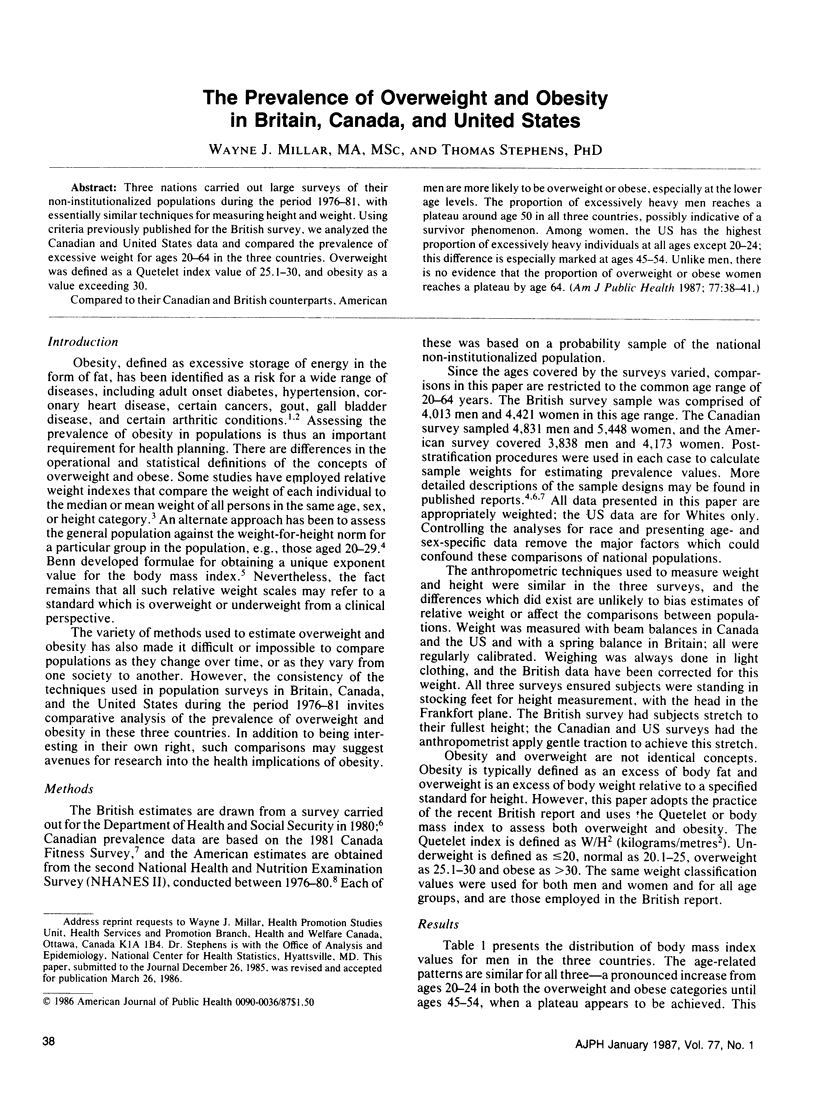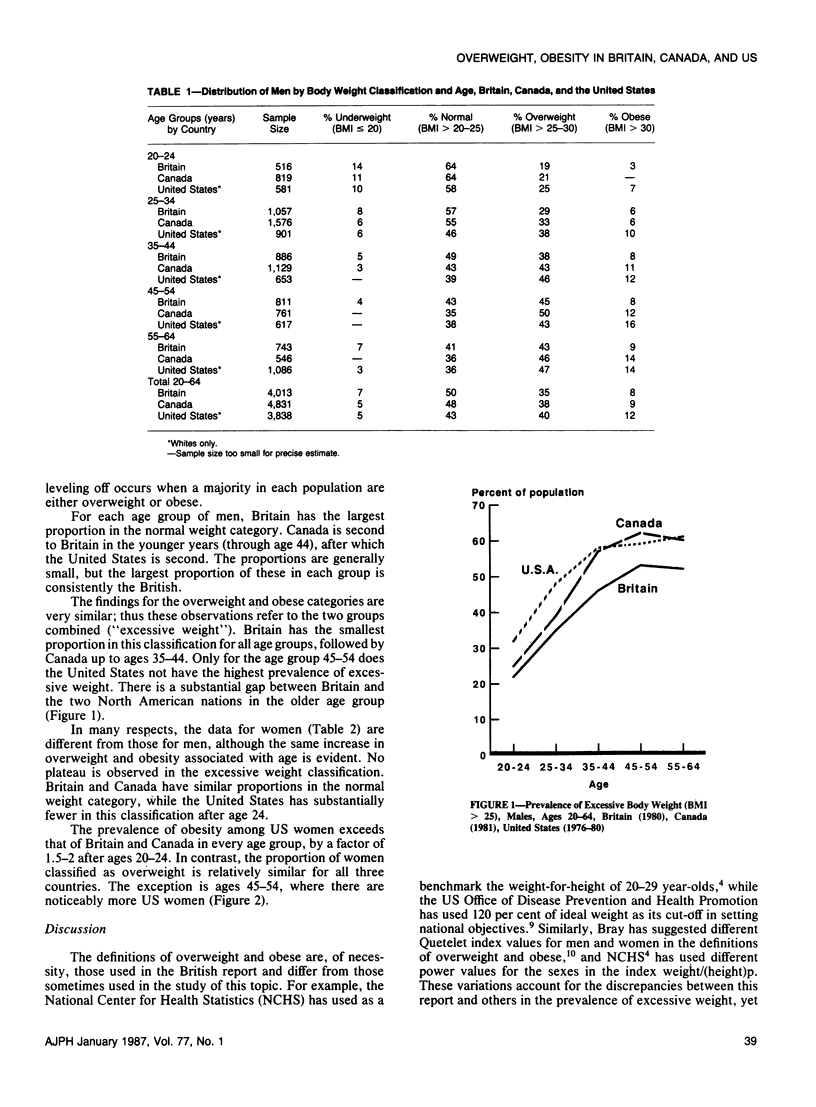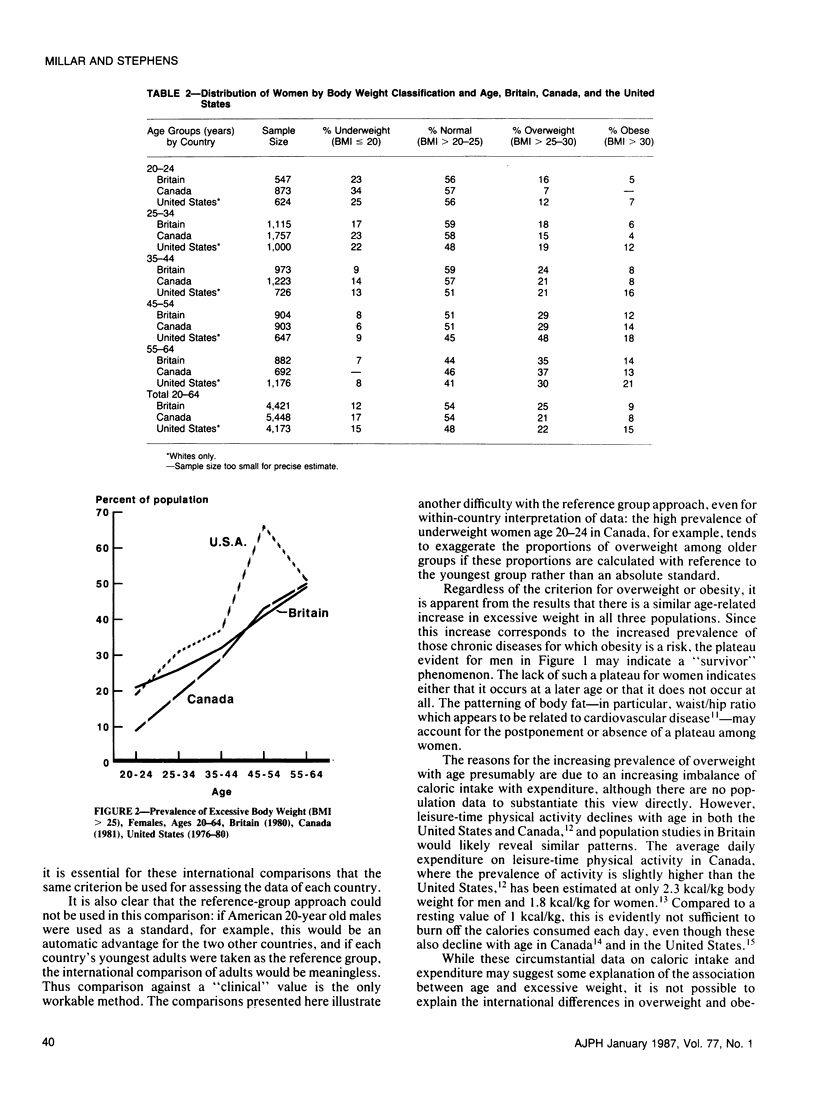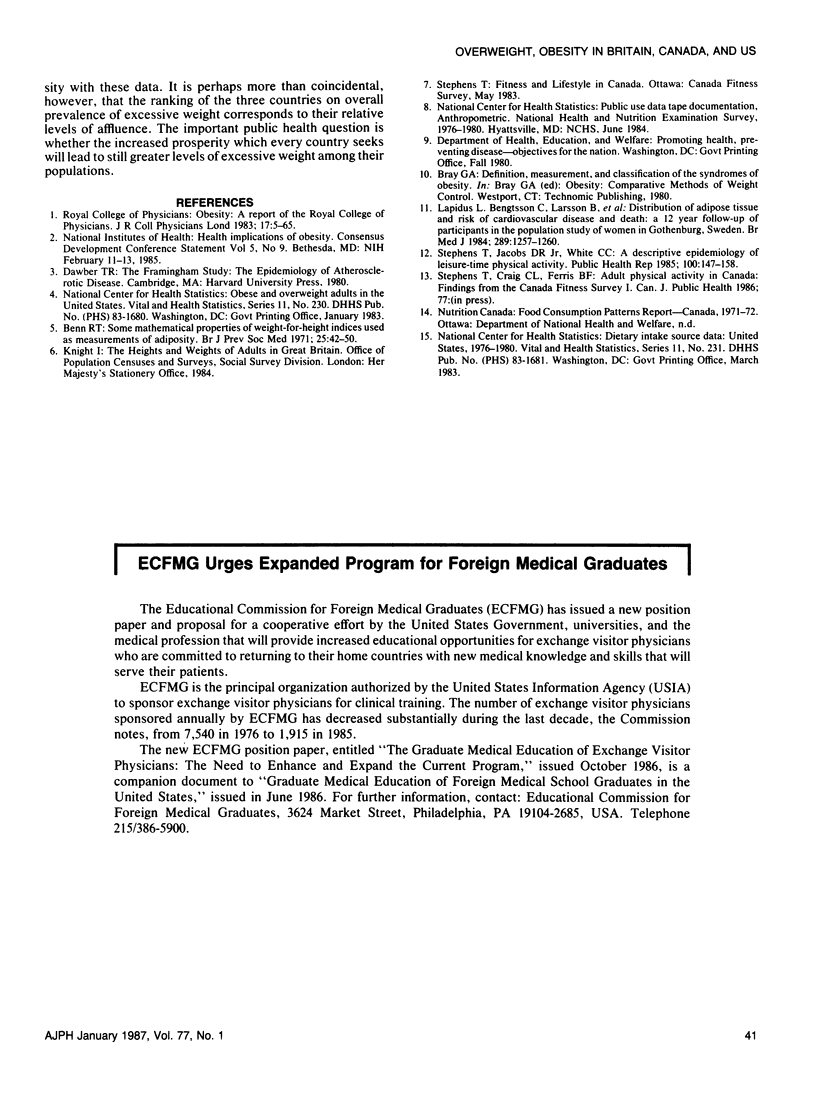Abstract
Three nations carried out large surveys of their non-institutionalized populations during the period 1976-81, with essentially similar techniques for measuring height and weight. Using criteria previously published for the British survey, we analyzed the Canadian and United States data and compared the prevalence of excessive weight for ages 20-64 in the three countries. Overweight was defined as a Quetelet index value of 25.1-30, and obesity as a value exceeding 30. Compared to their Canadian and British counterparts, American men are more likely to be overweight or obese, especially at the lower age levels. The proportion of excessively heavy men reaches a plateau around age 50 in all three countries, possibly indicative of a survivor phenomenon. Among women, the US has the highest proportion of excessively heavy individuals at all ages except 20-24; this difference is especially marked at ages 45-54. Unlike men, there is no evidence that the proportion of overweight or obese women reaches a plateau by age 64.
Full text
PDF



Selected References
These references are in PubMed. This may not be the complete list of references from this article.
- Benn R. T. Some mathematical properties of weight-for-height indices used as measures of adiposity. Br J Prev Soc Med. 1971 Feb;25(1):42–50. doi: 10.1136/jech.25.1.42. [DOI] [PMC free article] [PubMed] [Google Scholar]
- Lapidus L., Bengtsson C., Larsson B., Pennert K., Rybo E., Sjöström L. Distribution of adipose tissue and risk of cardiovascular disease and death: a 12 year follow up of participants in the population study of women in Gothenburg, Sweden. Br Med J (Clin Res Ed) 1984 Nov 10;289(6454):1257–1261. doi: 10.1136/bmj.289.6454.1257. [DOI] [PMC free article] [PubMed] [Google Scholar]
- Stephens T., Jacobs D. R., Jr, White C. C. A descriptive epidemiology of leisure-time physical activity. Public Health Rep. 1985 Mar-Apr;100(2):147–158. [PMC free article] [PubMed] [Google Scholar]


